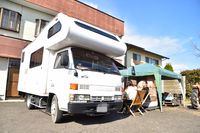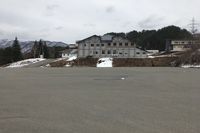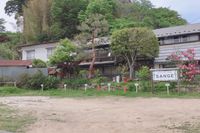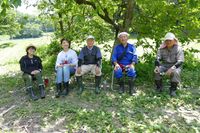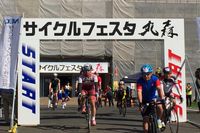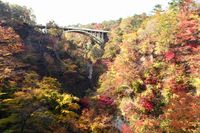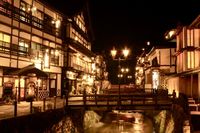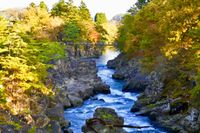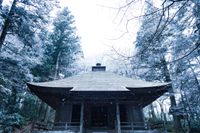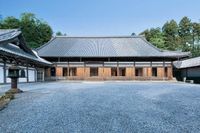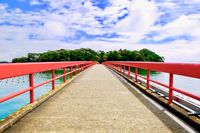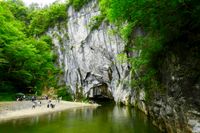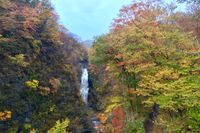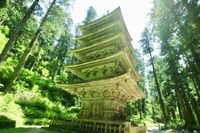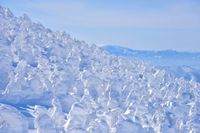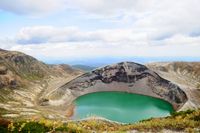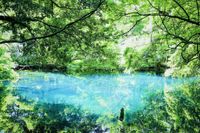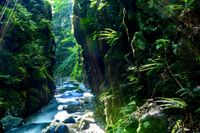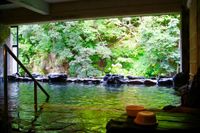Naruko Onsen
宮城県/大崎市

Description
This is a hot spring near Naruko Gorge in the northern part of Miyagi prefecture. The area is famous for people wearing "geta" (wooden clog type shoes) and visitors can borrow geta shoes here. The area is said to be so called due to the onsen being used for the baby of Minamito Yoshitsune and Satogozen.※Credit:旅と温泉の無料写真素材 おんふぉと http://on-photo.com/
Homepage
Address
Nearby Car Night Spots
Nearby Activities
Ranking Stations
(Bonfire BBQ) Chita Mihama Noma Beach Station
¥3,500〜
/ per nightAichi Noma, Mihamacho, Chita County
4.7
(42)Vanlife BASE | 45 min. from Narita Airport / Perfect for campervan travel/A seaside town rich in nature/Japanese countryside town/welcome traveler
¥7,000〜
/ per nightChiba Koseki, Kujukuri-machi, Sambu-gun
5.0
(61)Nearby Drive Spots
Naruko Gorge
This is a canyon formed by the erosion of Arao River at the southern foot of Mt. Hanabuchi. A cliff with a height of 100 meters becomes full of autumn hues during the autumn leaf season. Ofukazawa Bridge is a symbol of Naruko Gorge, which is said to be the most spectacular point in Tohoku.
Ginzan Onsen
This is an onsen based in the eastern area of Yamagata prefecture. Historically, this area was prosperous for mining at Nobesawa Ginzan mountain, and Onsen became more prolific in the area from the Edo era(1603-1868). There are several wooden ryokan (lodgings) made from wood, that were constructed between the Taisho and Showa eras(1912~1989), and the area even now has an modern onsen village type atmosphere.
Genbi Gorge
This is a 2km long valley through which Iwai River flows, and which Date Masamune is said to have passed through. The rocks and other material accumulated by the eruption of Mount Kurikoma was taken down by the flow of the river to form the area of the land that it is today. The area is also famous for "Kakko dumplings" also known as "fly in the air dumplings". There are many tourists who visit this place along with Geibi gorge.
Hiraizumi Chusonji Temple
This is a World Heritage Temple built by Fujiwara Kiyohira, the first of the noble Fujiwara family, during the Heian era(794-1185). The main temple contains the Buddha, as well as the remains of three generations of the Fujiwara. The luxurious golden hall shows the glamorous culture of the noble family, and is known as a place where the Fujiwaras wished for life pleasure.
Zuiganji Temple
This is a temple built by Date Masamune of the Rinzai sect in 1609. The Momoyama style main hall constructed by Masamune is designated as a national treasure, and two red and white plum trees known as "Garyu-bai" planted by Masamune himself are still present here. As the temple is located in Matsushima, one of Japan's three scenic spots, it was formerly known as Matsushima-dera.
Matsushima
This is a group of about 260 islands in Matsushima Bay, one of Japan's three famous scenic spots. Four famous scenic spots of "spectacle, reverence, hiddenness and weather" called the "Matsushima Four Great Sights" are famous here. Also known as a moon viewing spot, this place fascinated great figures such as Date Masamune, Matsuo Basho, Einstein and others.
Keibi Gorgi
This is a 2km long valley along which Satetsu River flows. There is a limestone quay of around 50 meters high that continues along the river with various unusual rocks and waterfalls dotted along the way. This place is popular for enjoying a local traditional song of the area while riding a boat along the river.
Akiho Onsen
This is an Onsen located in Sendai. It is located within a fluvial valley formed by the fluvial terrace on Natori River. In the Kofun era(250-538), the 29th emperor, Kinmei was particularly found of this onsen and received official royal status as an "Miyu" onsen.
Mount Haguro Five Storied Pagoda
This is said to be the oldest tower in the Tohoku area of Japan, built during the Heian era(794-1185). It is said to be a mountainous area housing a God, and the tower is situated on the path which is used by those traveling to the mountain as a place of worship and revering nature. The main God is known as the Kunitsu God, and once you have climbed the 2,446 stairs of 1,700 meters, you will be greeted by a 1,000 year old cedar tree.
Zao Onsen
Located at the western foot of Mount Zao, this is a hot spring with 1,900 years of history. It has characteristically acidic spring water and is known as "Princess water" due to its skin whitening effects (skin whitening seen as more favourable in Japan). As there is also a ski slope, skiing can also be enjoyed here in the winter. The area is famous for its views of the forest of snow covered trees.
Okama Crater
This is a crater lake at the peak of Mount Zao, with an altitude of 1550m above sea level. As the water contains high levels of acid, there is no wildlife present, but the water shines a light green hue due to the acid levels. The name comes from the fact that the crater looks like a pot full of water.
Zao Fox Village
This is a zoo at the peak of Mount Zao in Minami-Zao. There are around 250 foxes of 6 types being raised here, with around 100 grazing in the fields. The owner opened this zoo in 1990 for the foxes (which were cultivated for fur) had no place to go. There are also rabbits, goats and ponies here too.
Maruike Sama
This is a mysterious pond in Chokaisan Oomonoimi Shrine. In the Heian era(794-1185), there is a legend that a Samurai named Kamakura Kagemasa spectacularly slayed an enemy general who had cut one of his eyes out. After the Samurai washed his eyes in the pond, the fish living there are said to have shown respect to the Samurai and also all had only one eye. ※Credit:Kota Wada http://bit.ly/2ObTUKz
Ishizawa Gorge
This is a gorge that flows through Koyoshi River. There is a cliff that continues for 8km where one can see Ishizawa waterfall, various rock formations and caves, with numerous hidden spots. The area is popular in autumn for the autumn leaves that appear.
Hanamaki Onsen
This is a hot spring in Hanamaki. It is located at the foot of Mount DogasawaMount ManjyuDai River within a landscape of spectacular scenery. There is a luxury hotel situated within a secluded area of Sakura and red pine trees, and is an ideal onsen destination for families with children.※Credit:旅と温泉の無料写真素材 おんふぉと http://on-photo.com/

